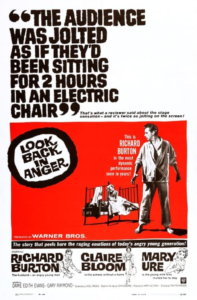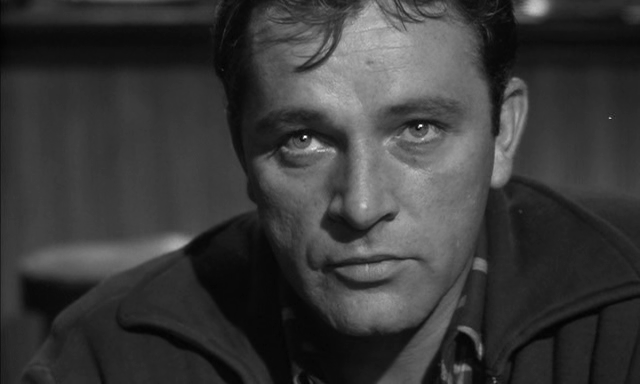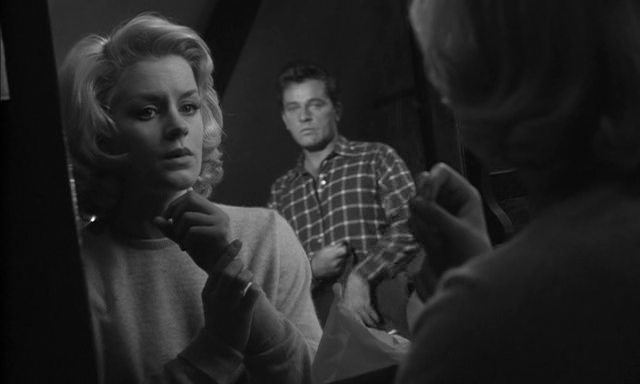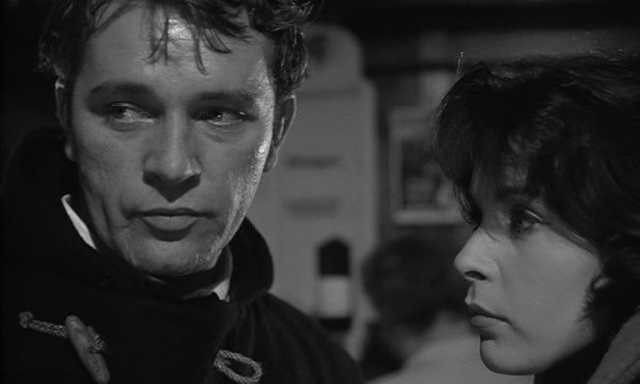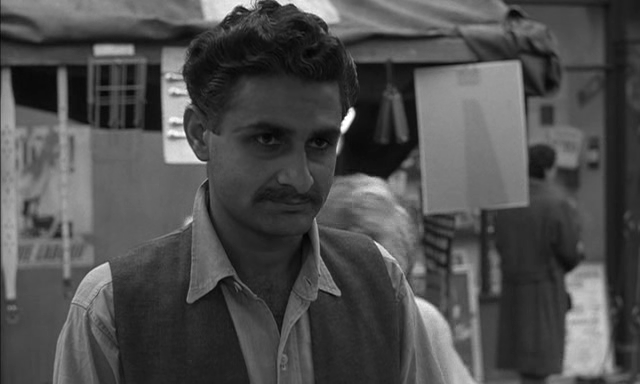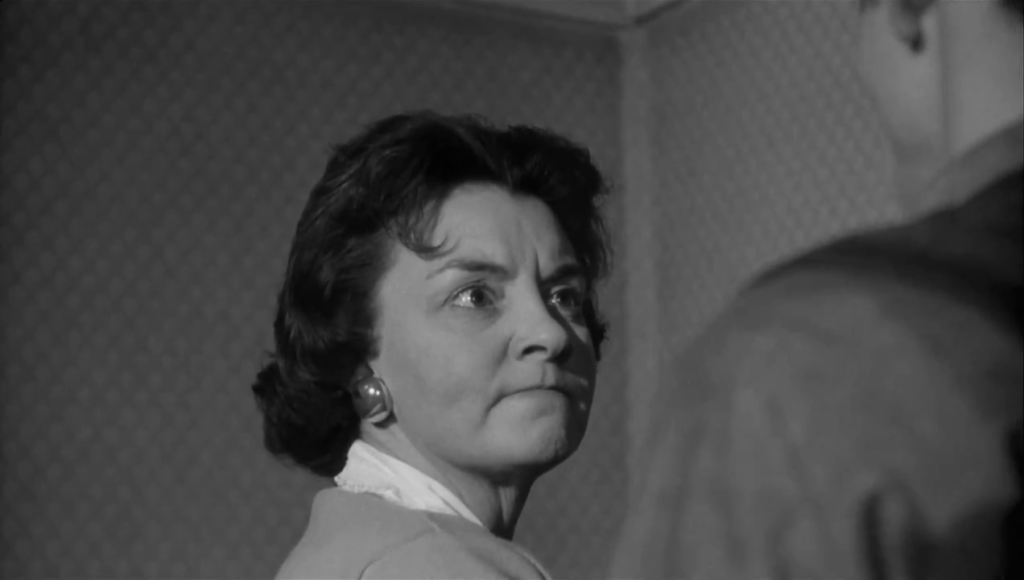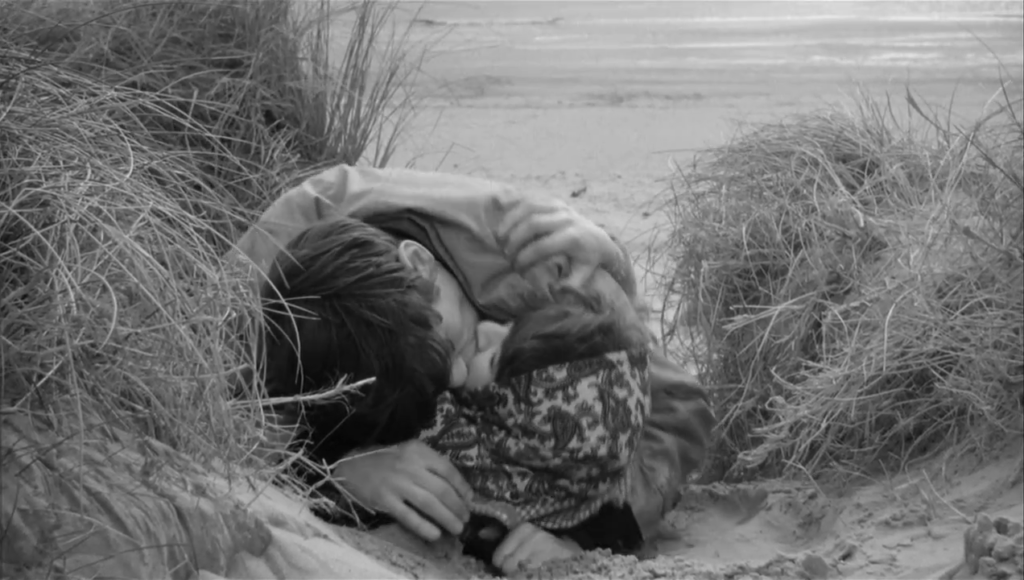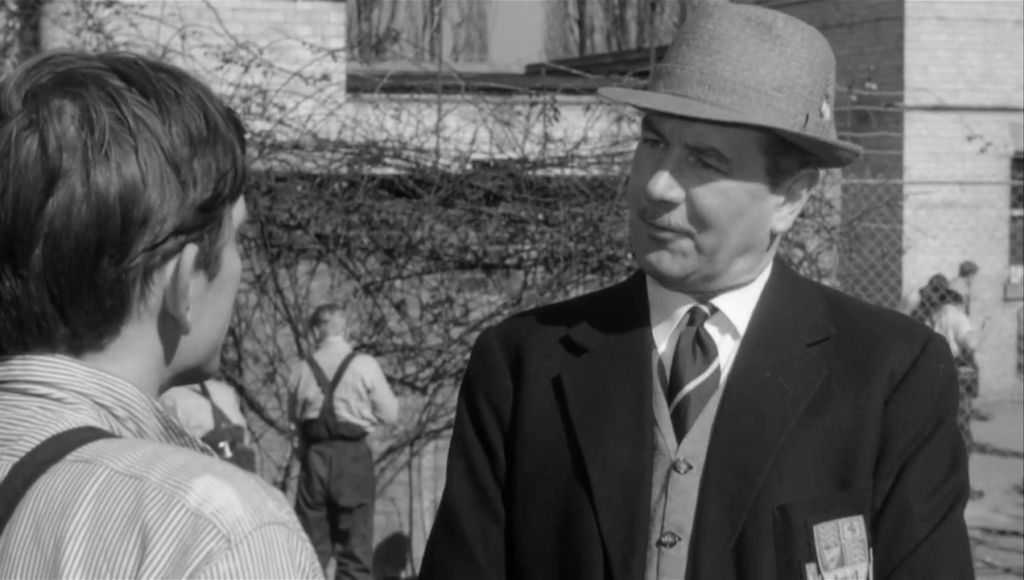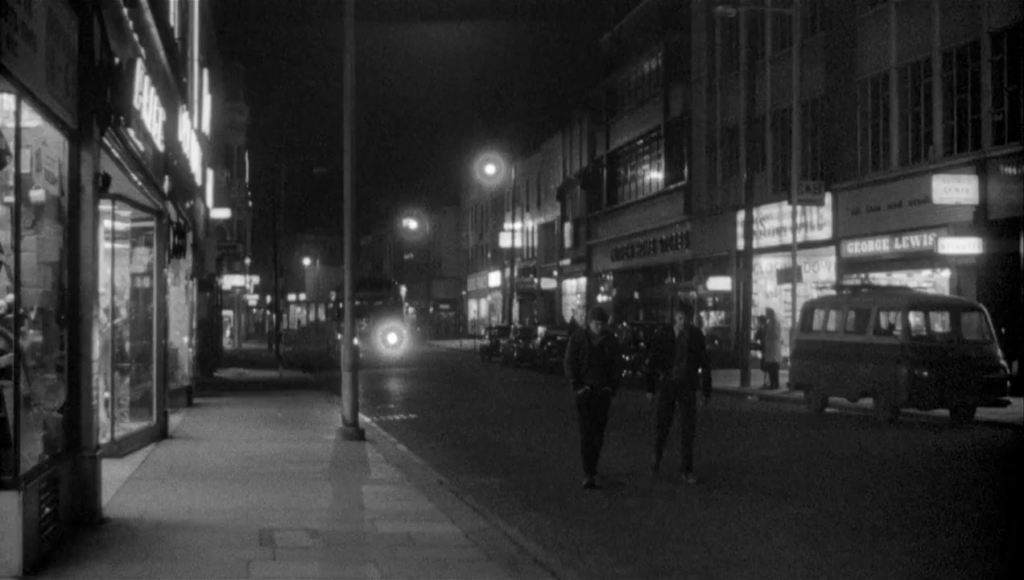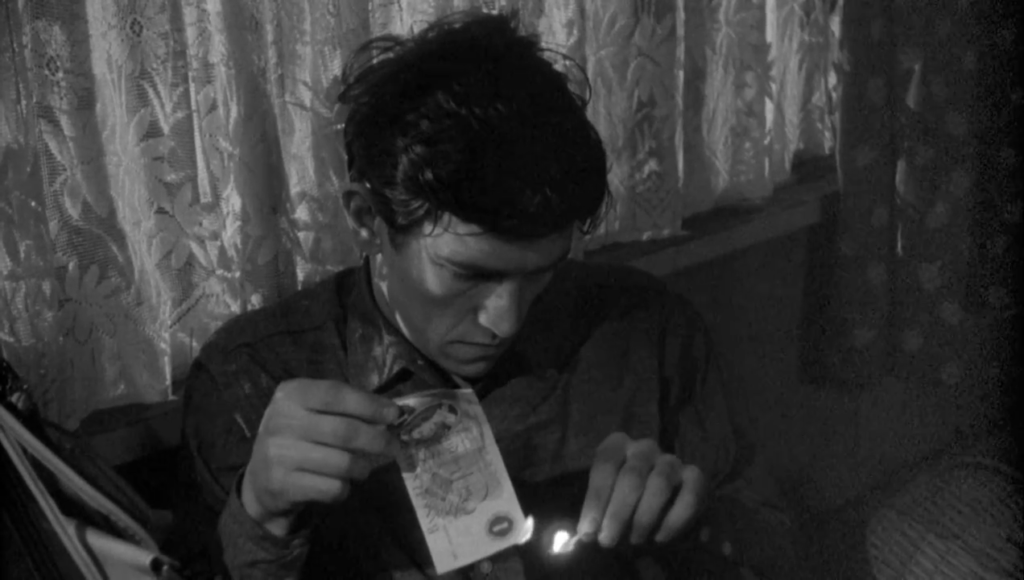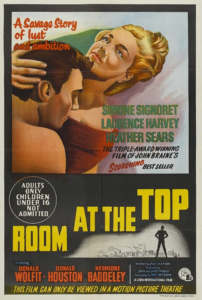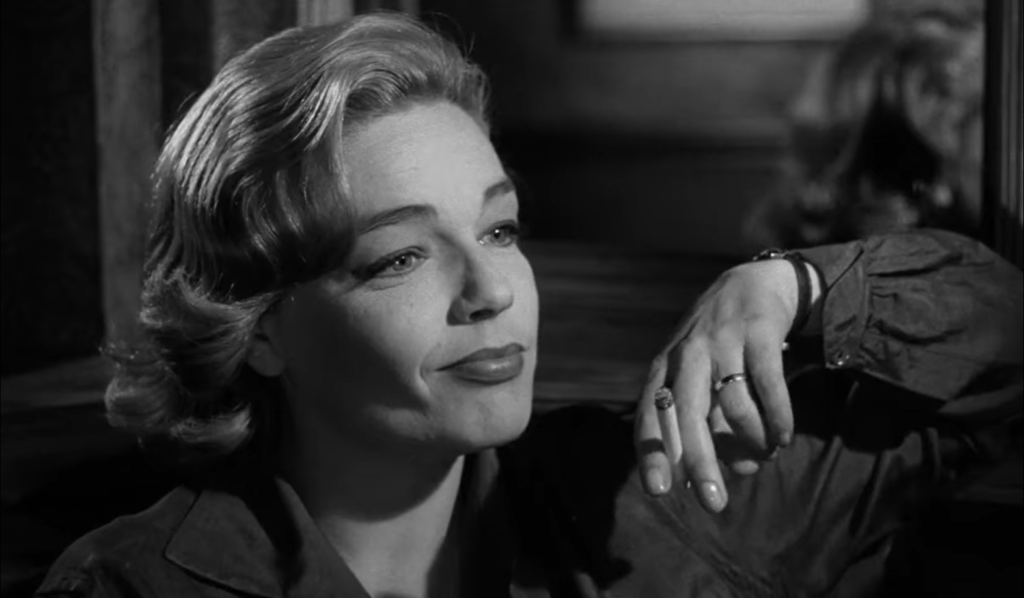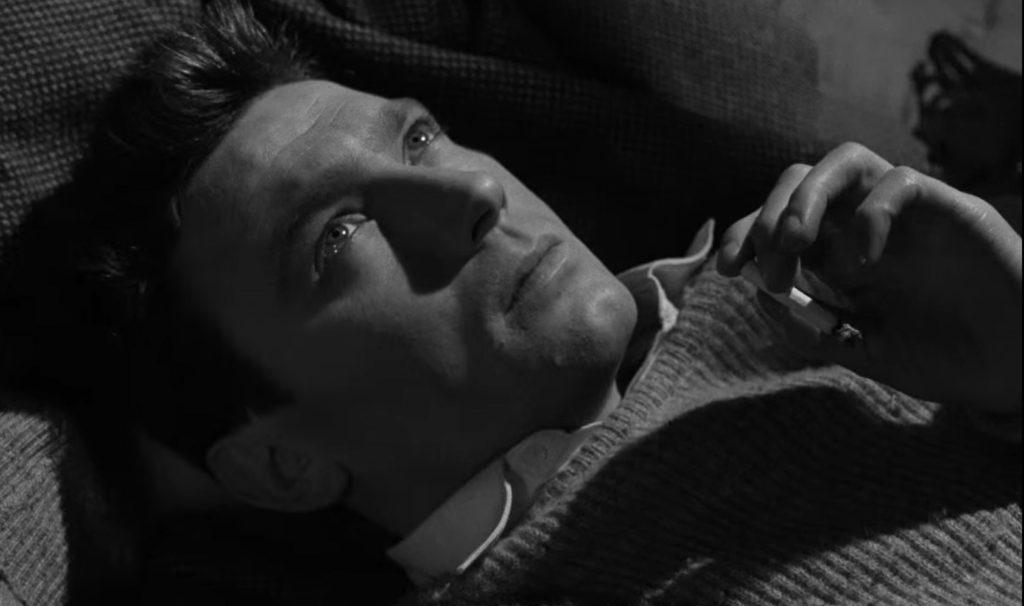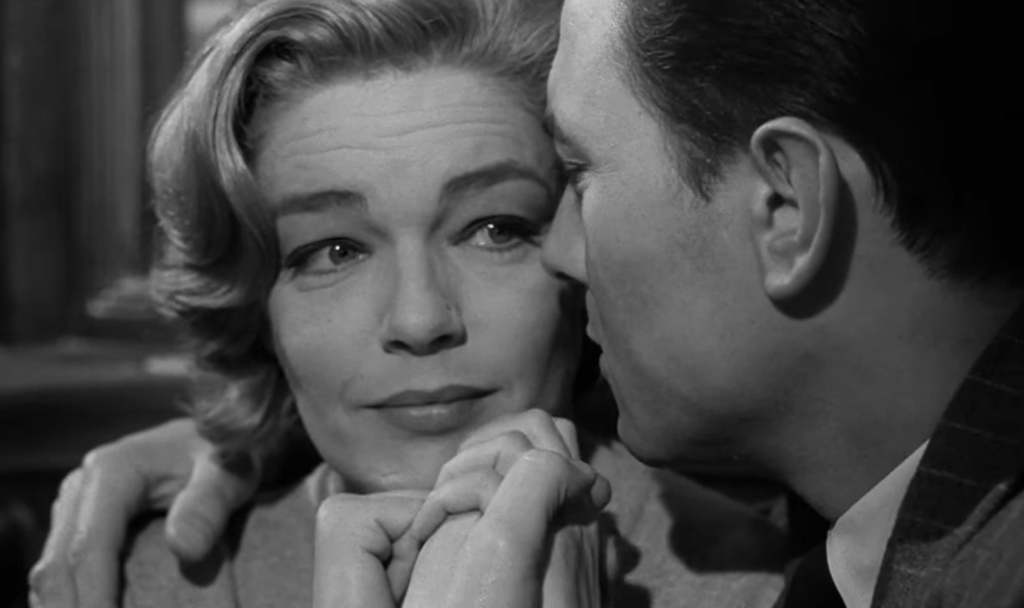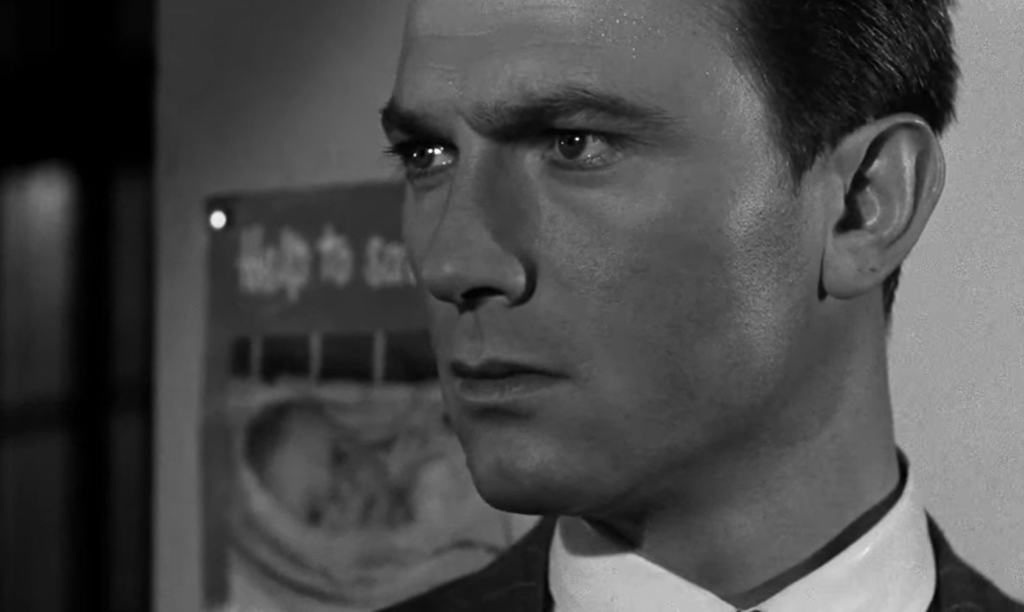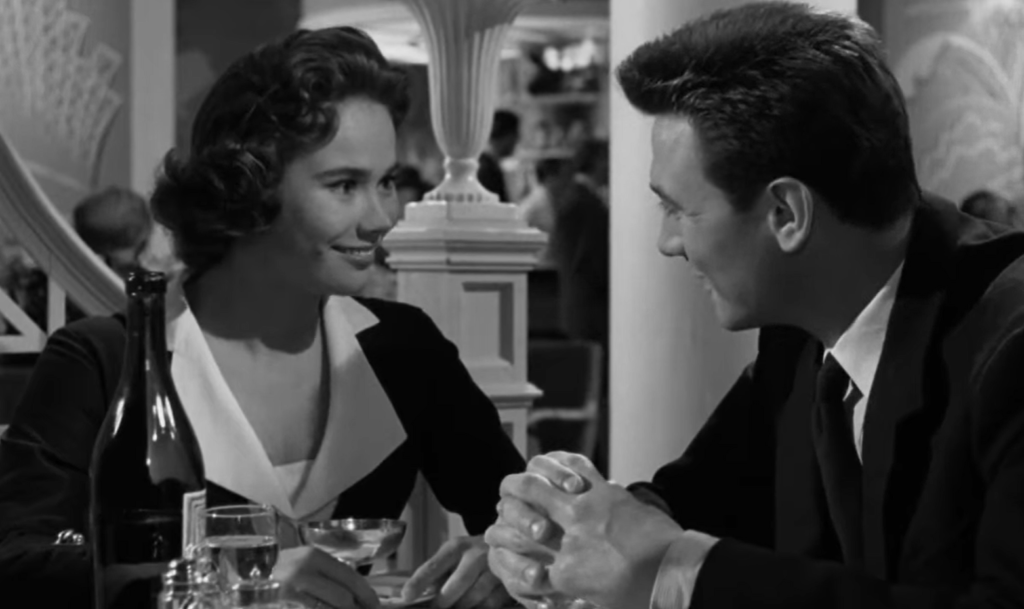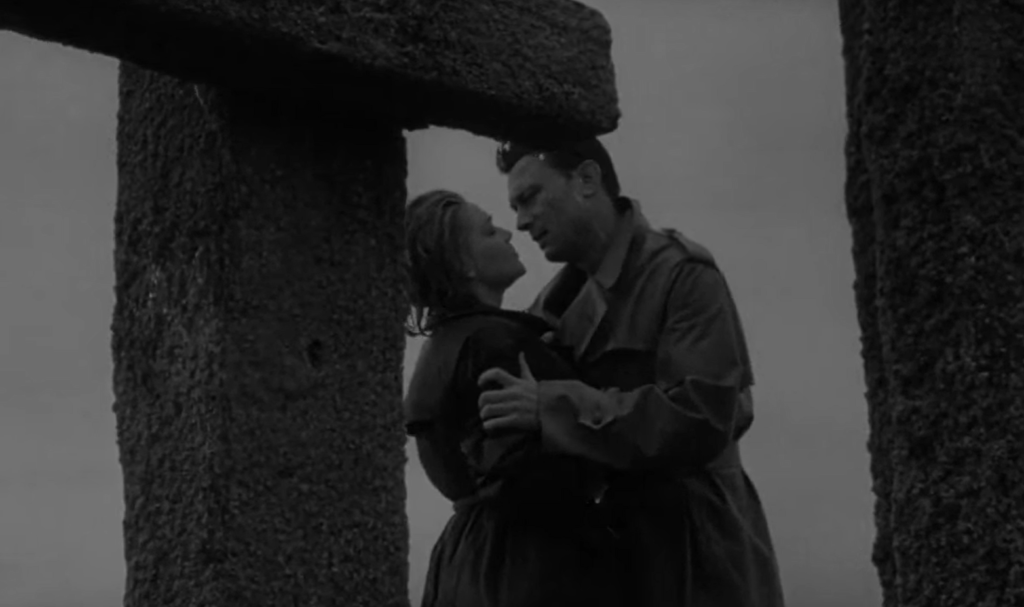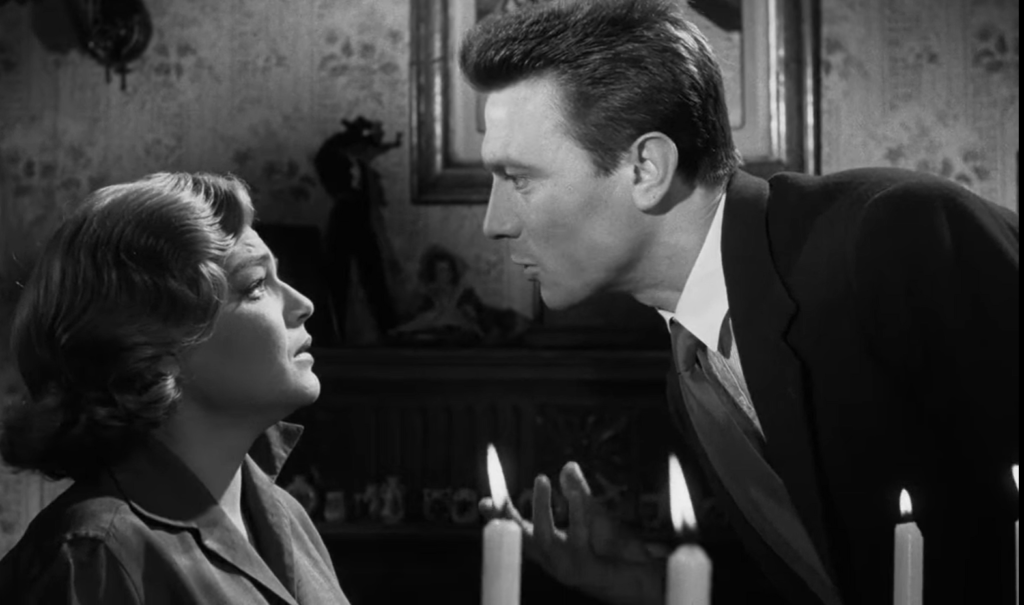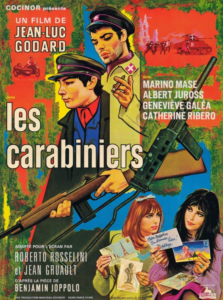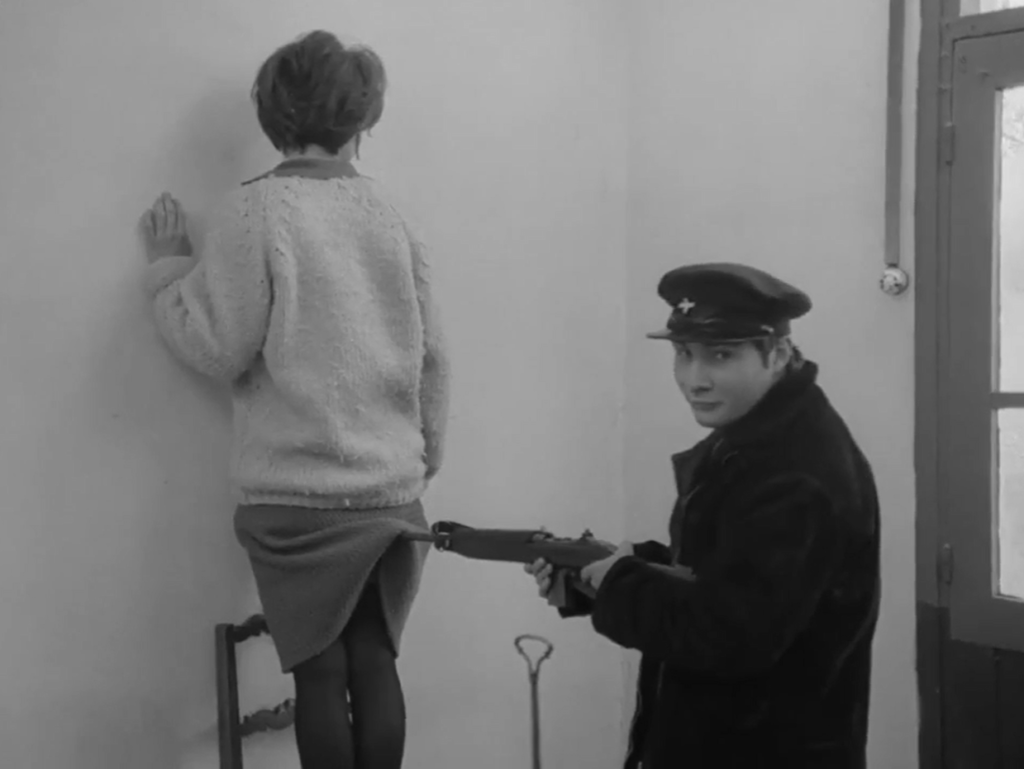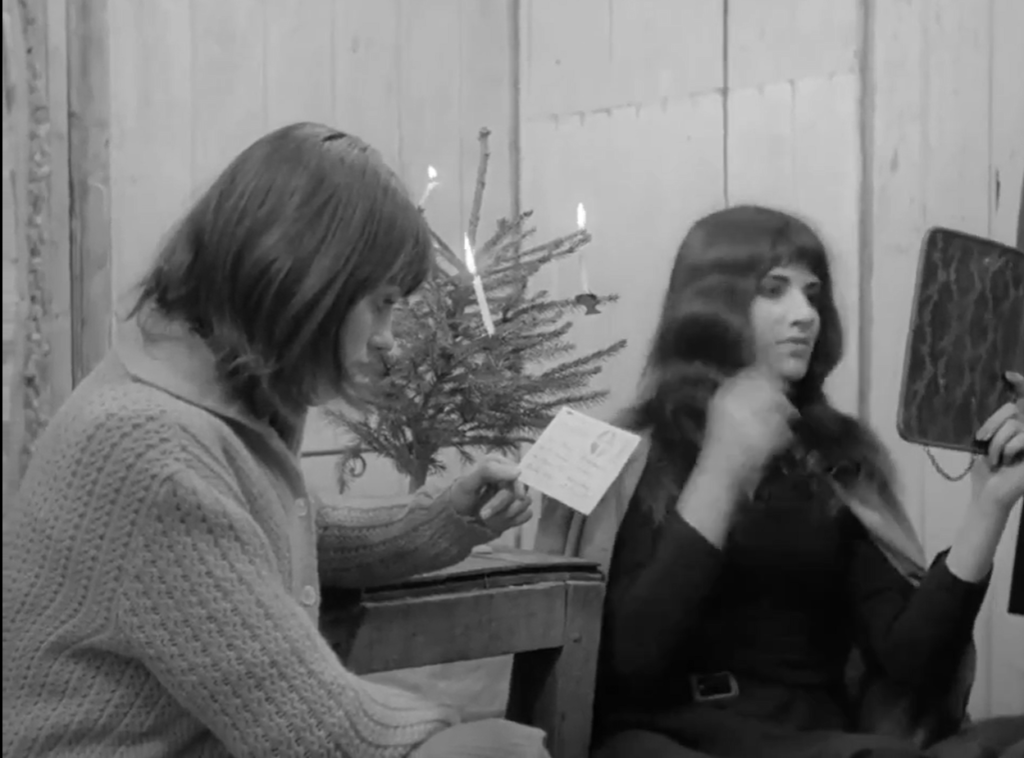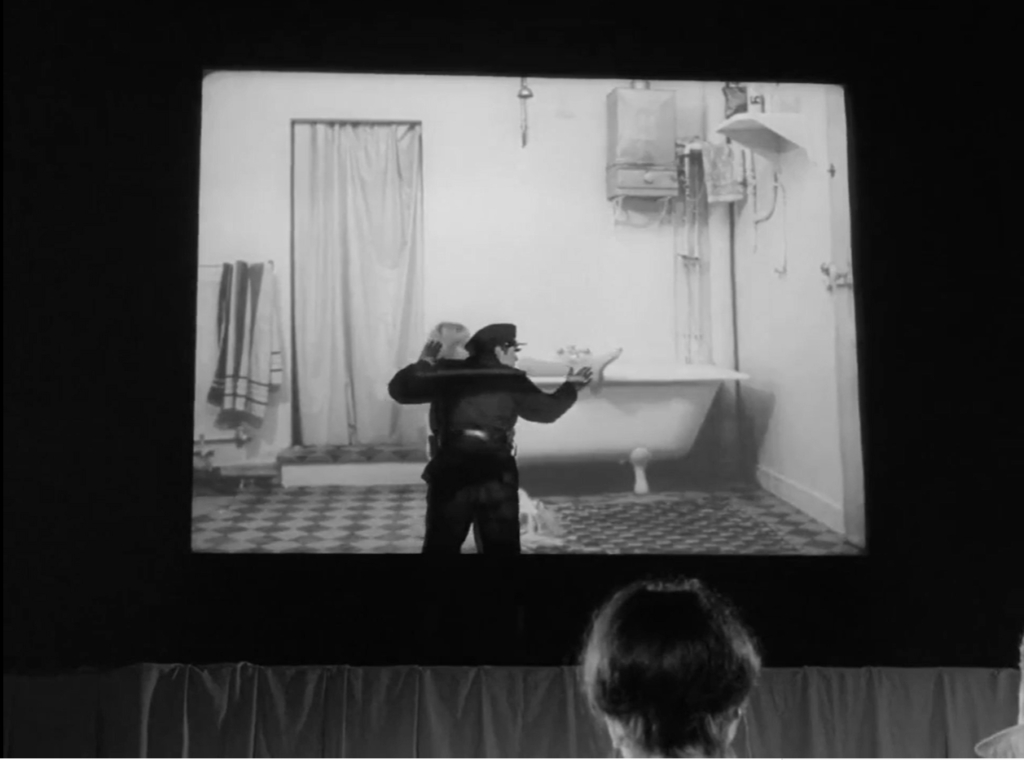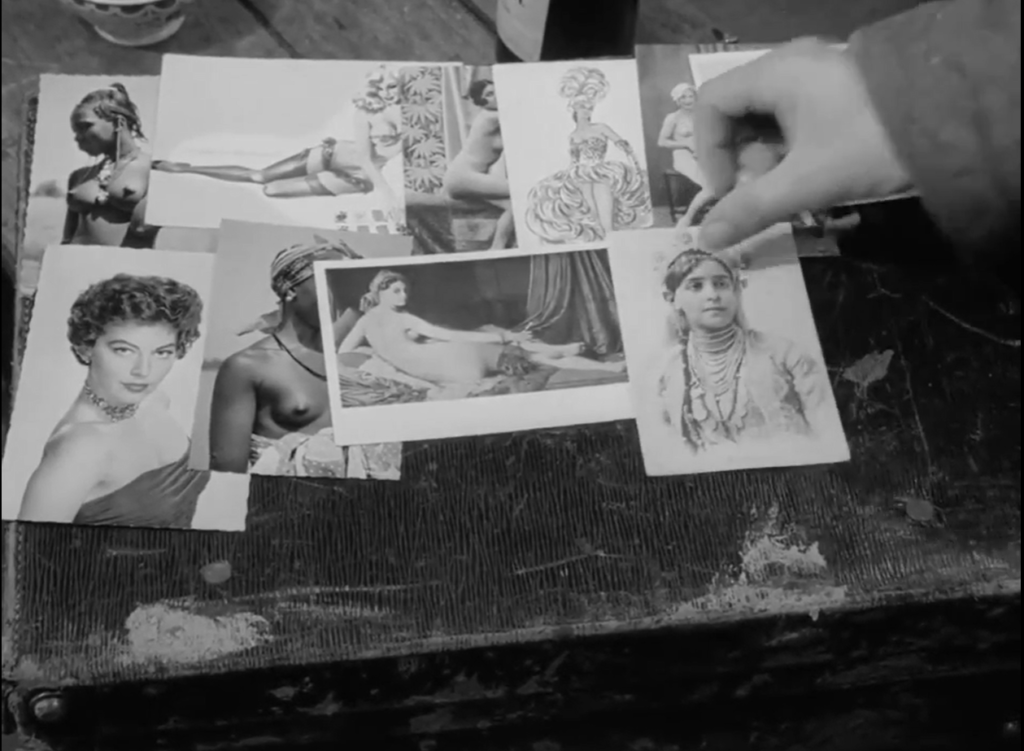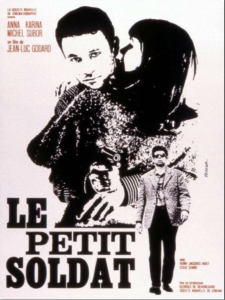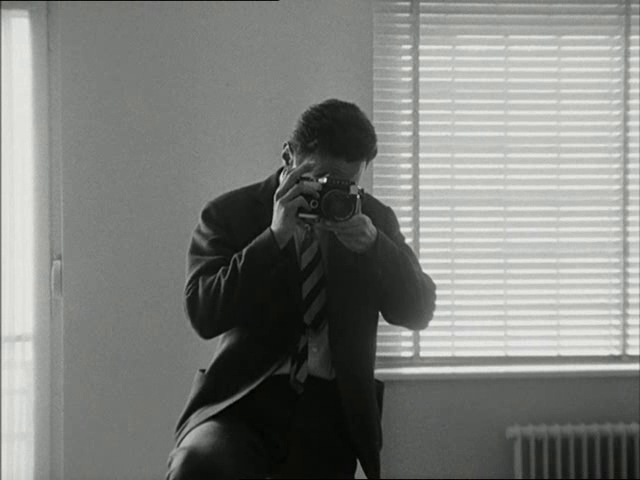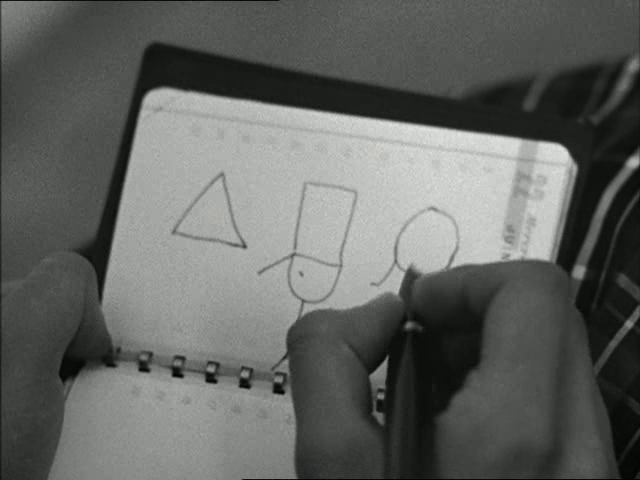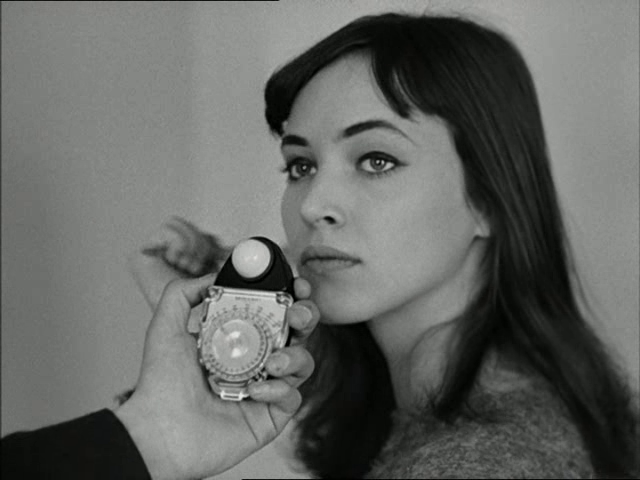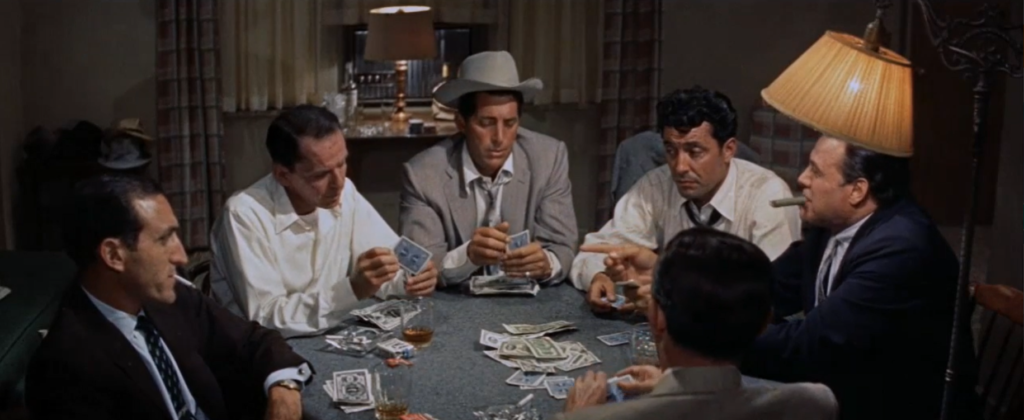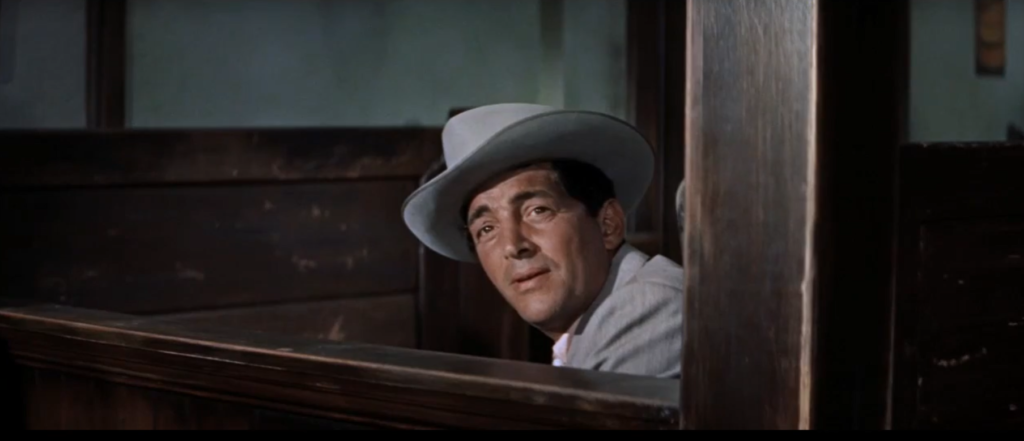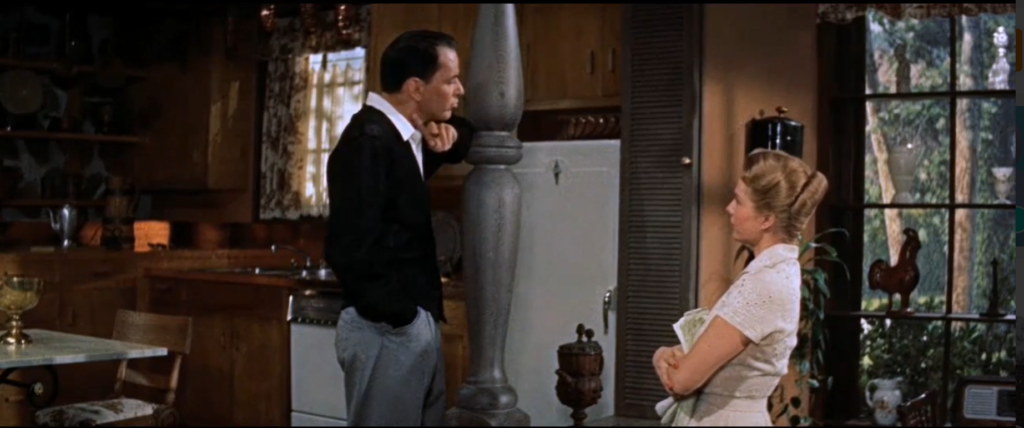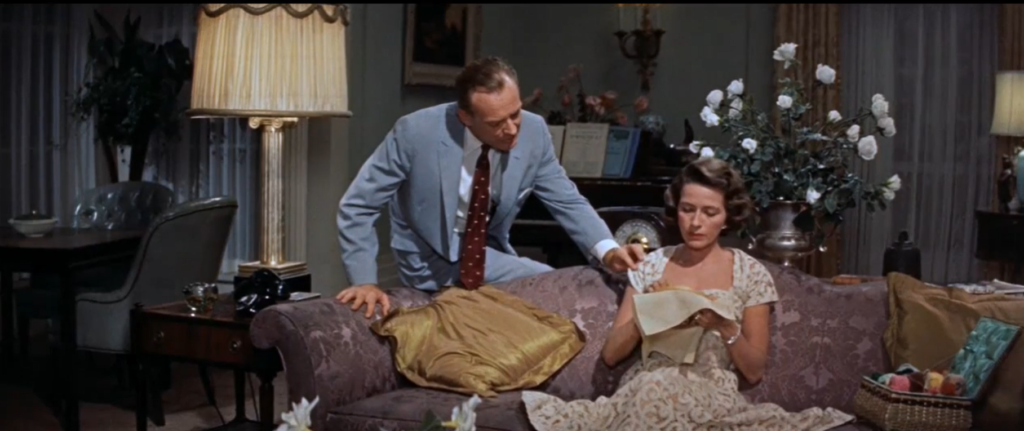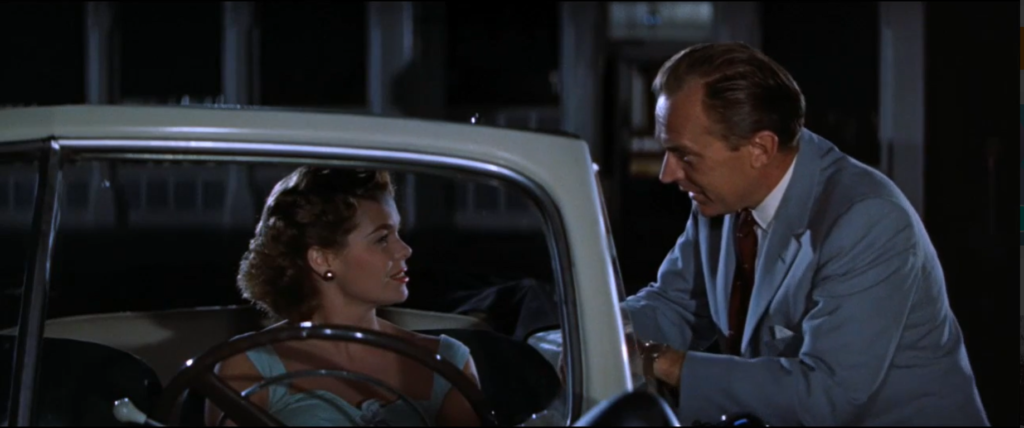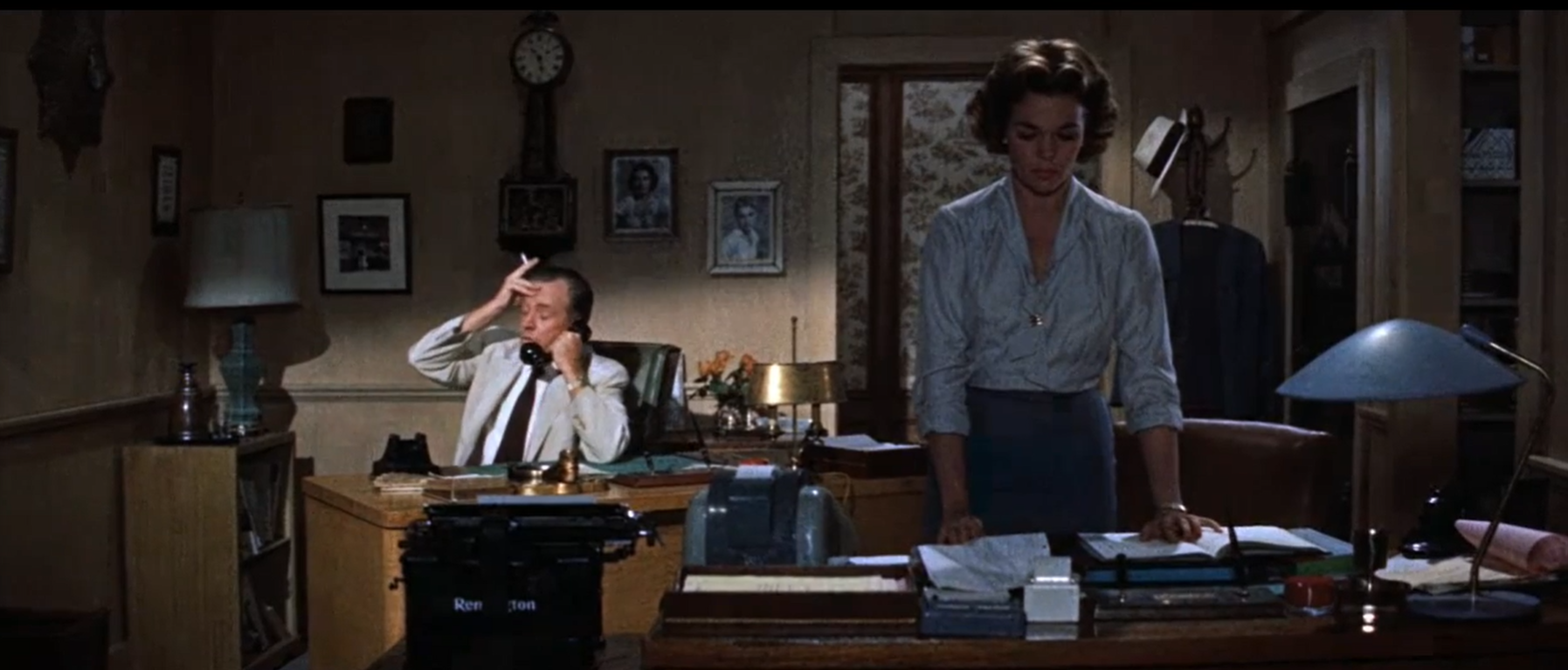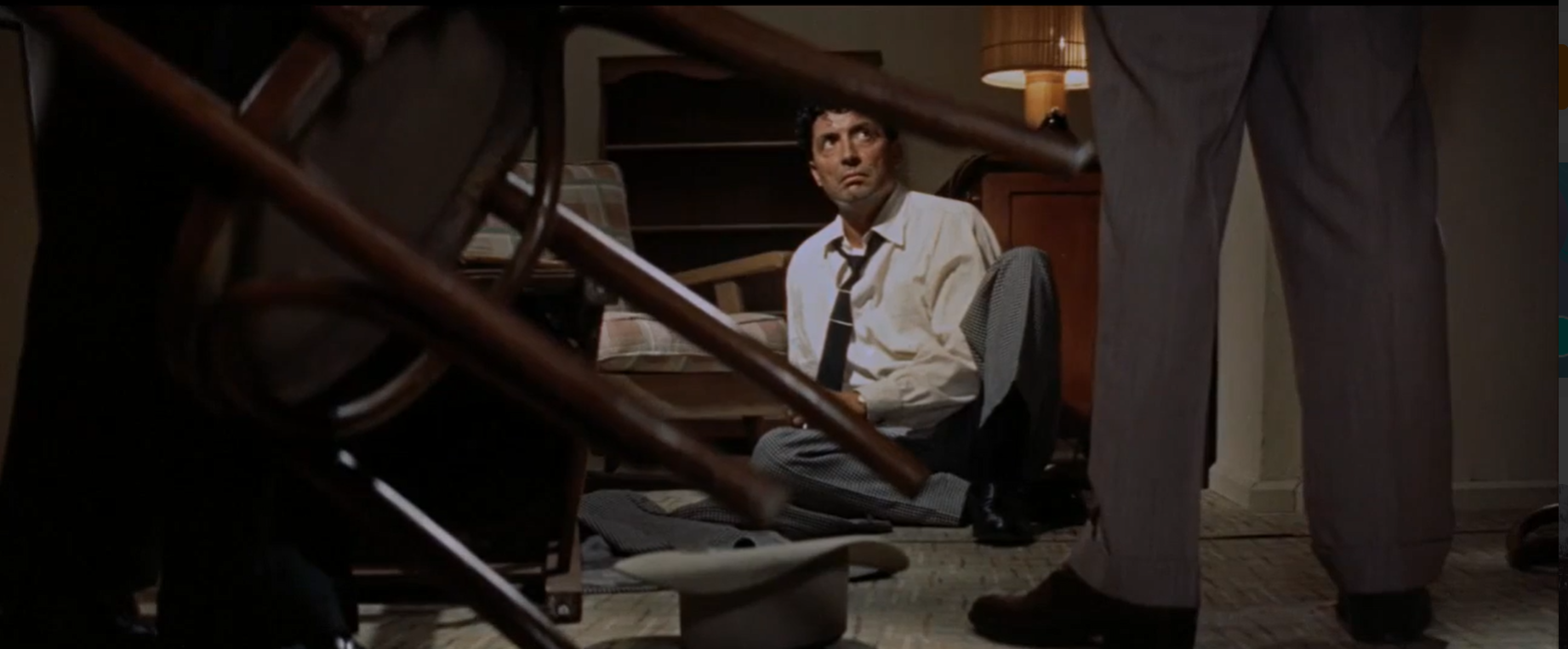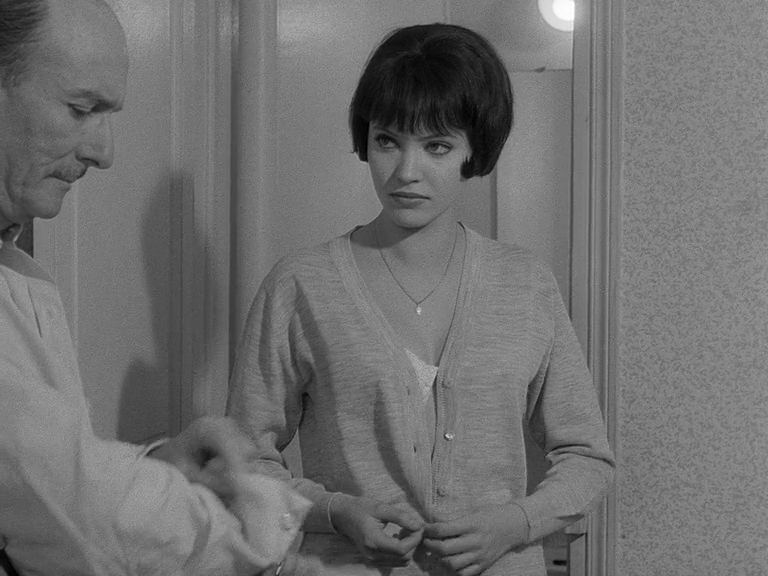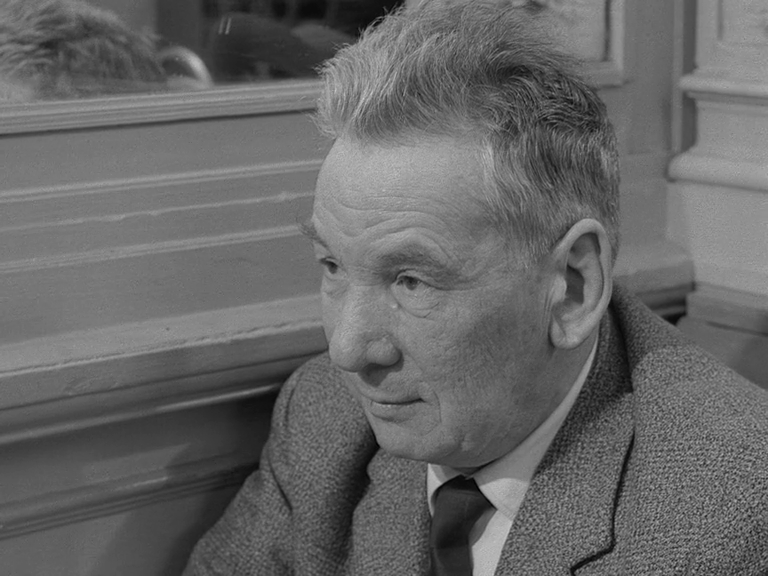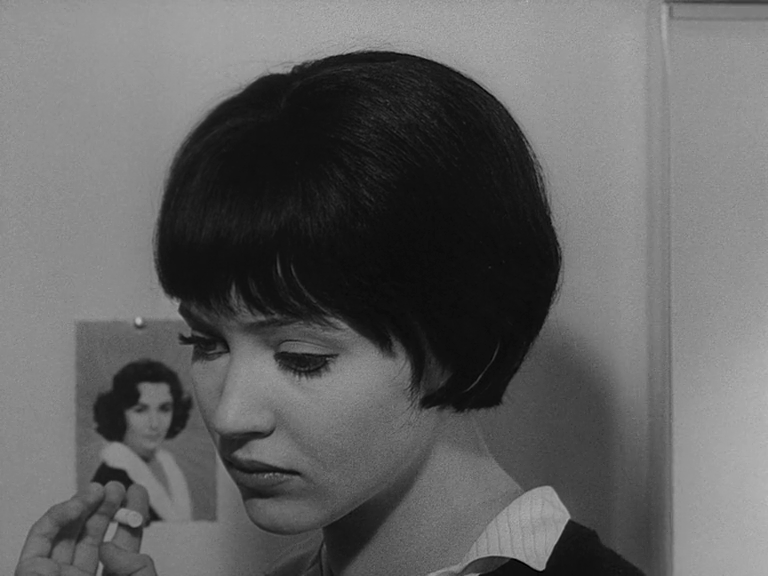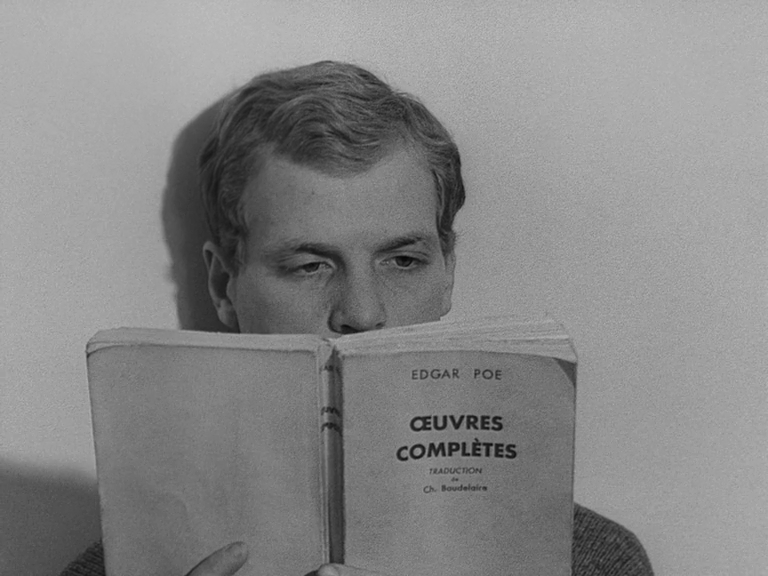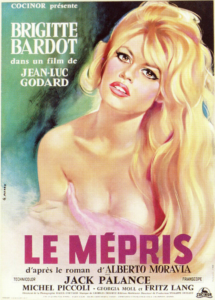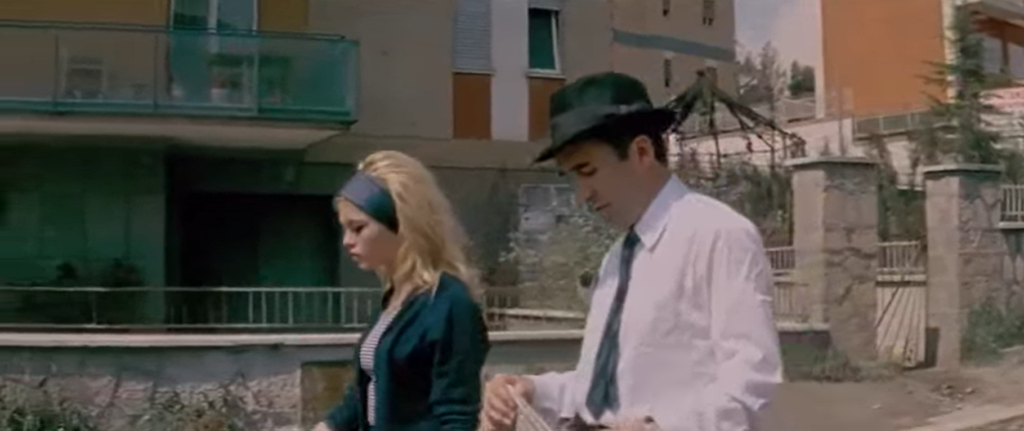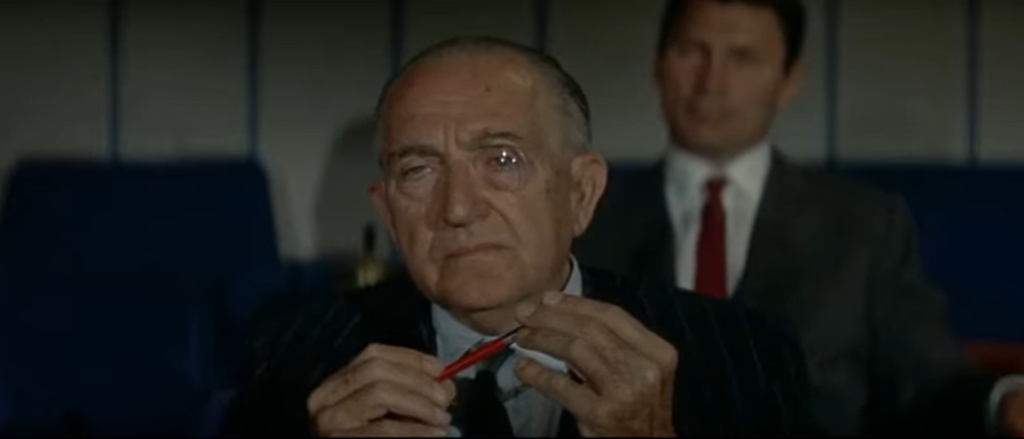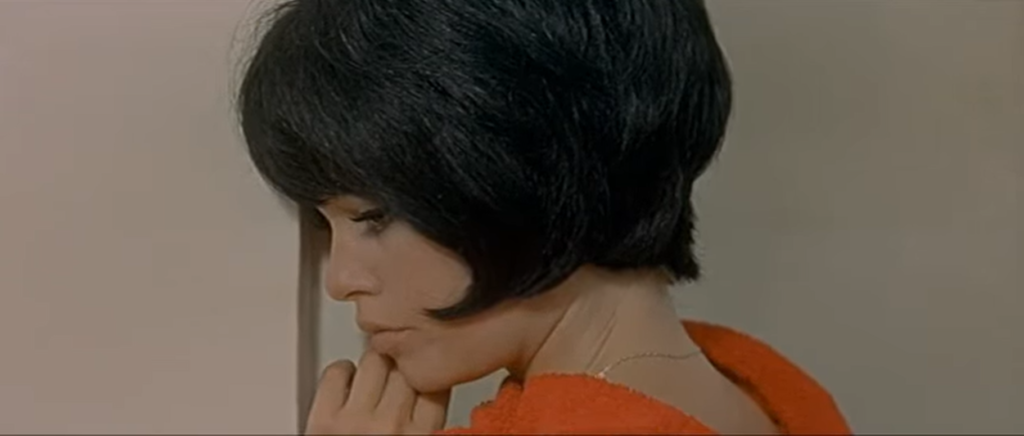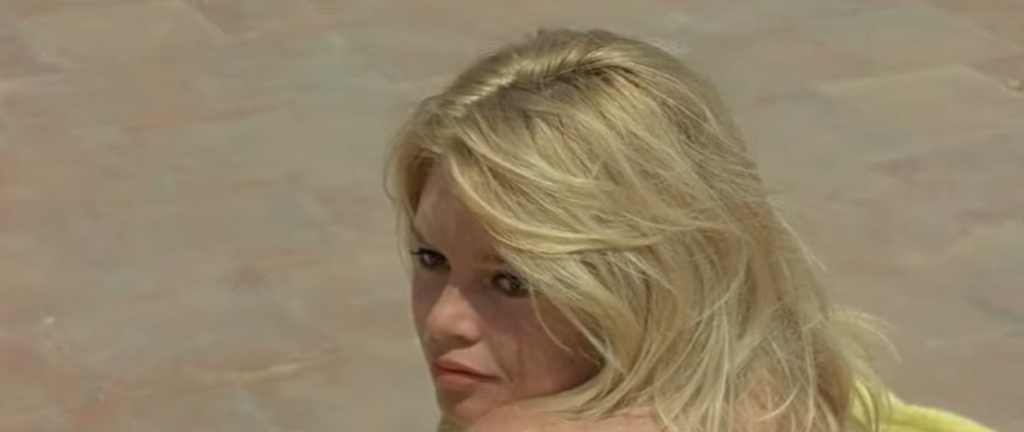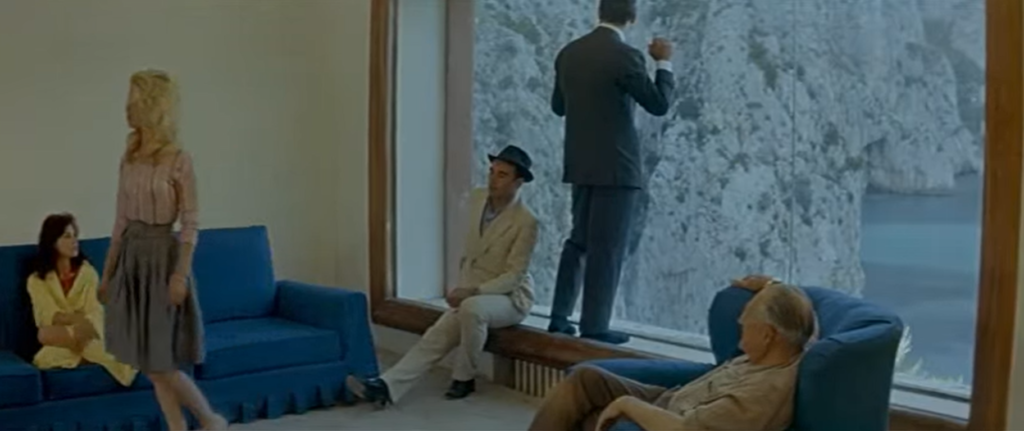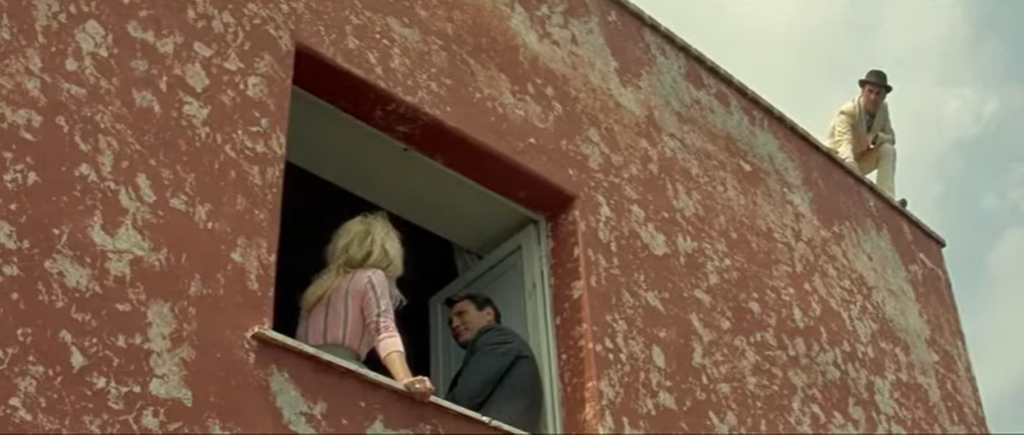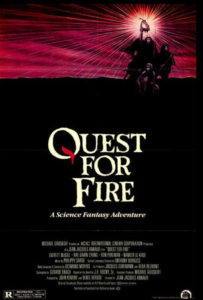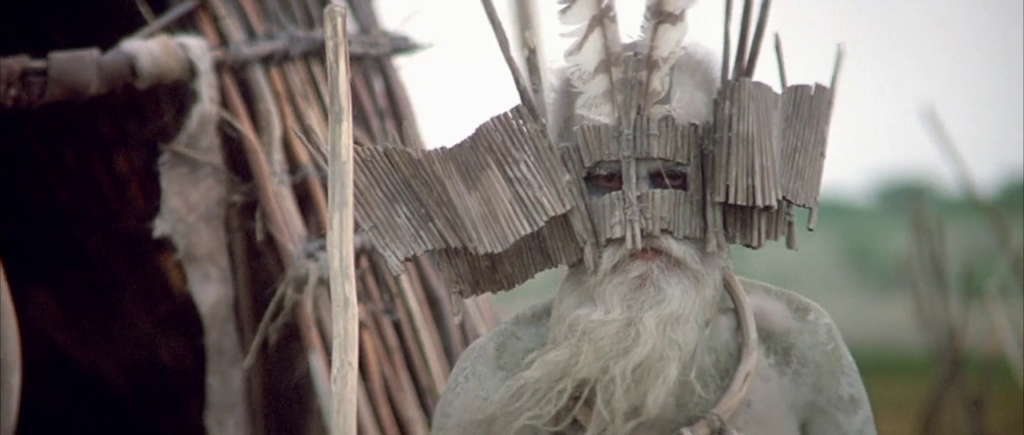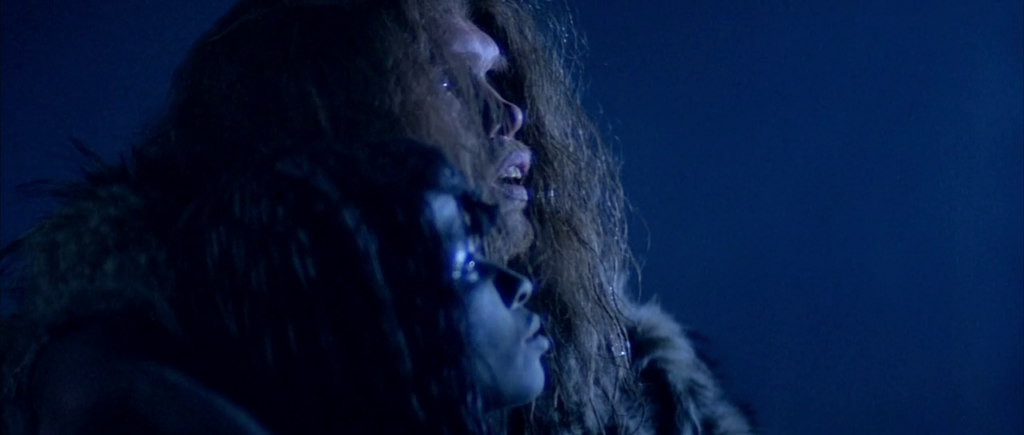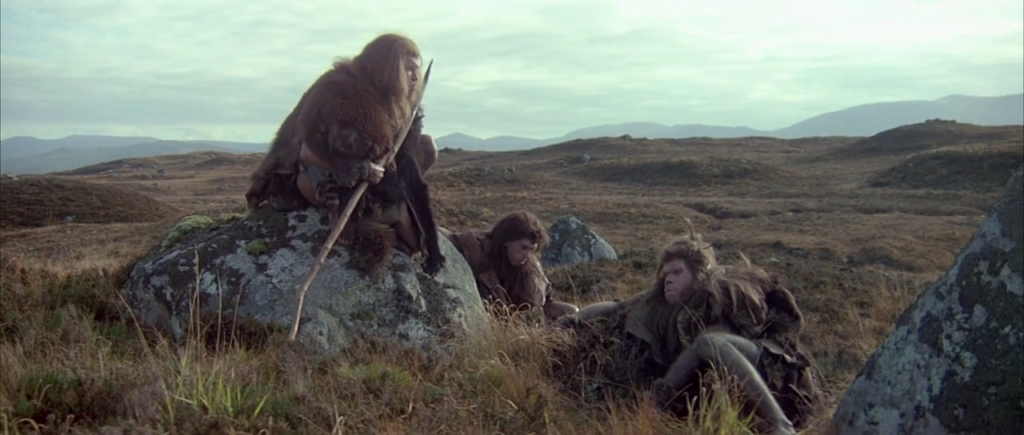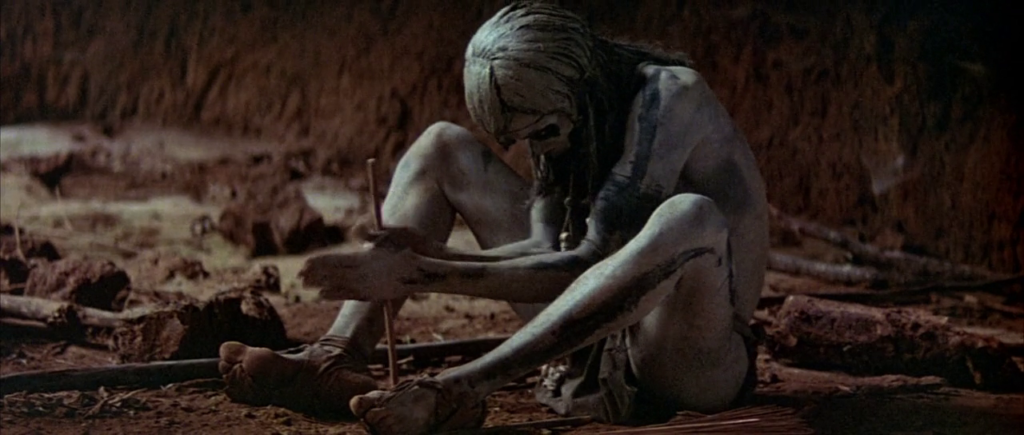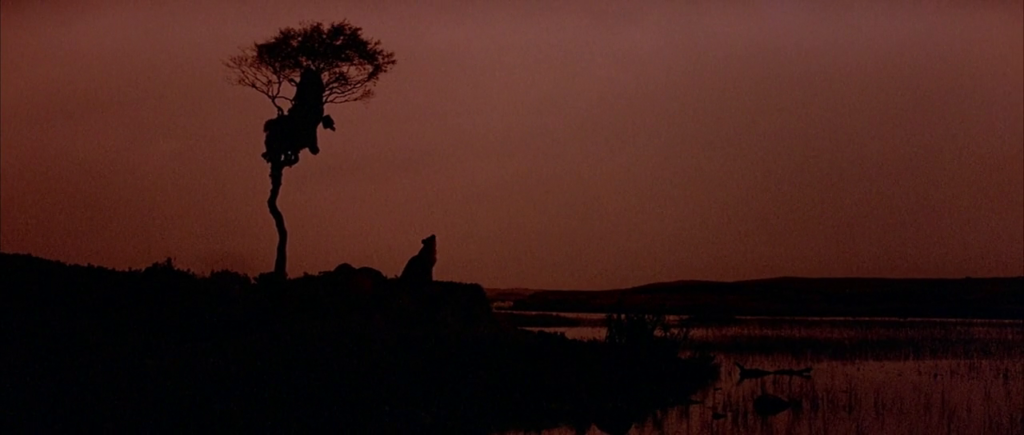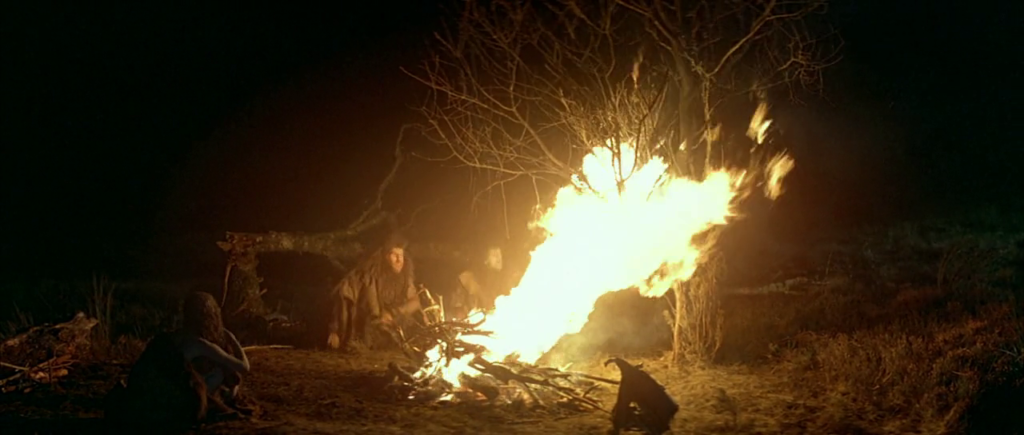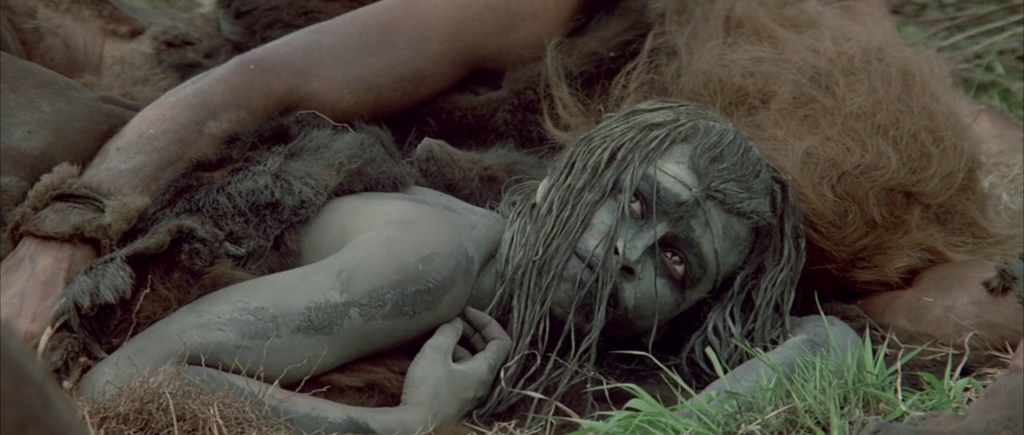|
Genres, Themes, Actors, and Directors:
- French Films
- Heist
- Jean-Luc Godard Films
- Jean-Paul Belmondo Films
- Love Triangle
- Thieves and Criminals
Response to Peary’s Review:
Peary writes that this “quirky Jean-Luc Godard film is sort of a mix of Breathless (where Belmondo performs crimes in the nonchalant manner he saw in gangster films) and Les Enfants Terribles (where the two males and one female commit petty crimes for fun),” given that “pals Sami Frey and Claude Brasseur play-act crime movies… much as little kids imitate heroes from war or western movies.”
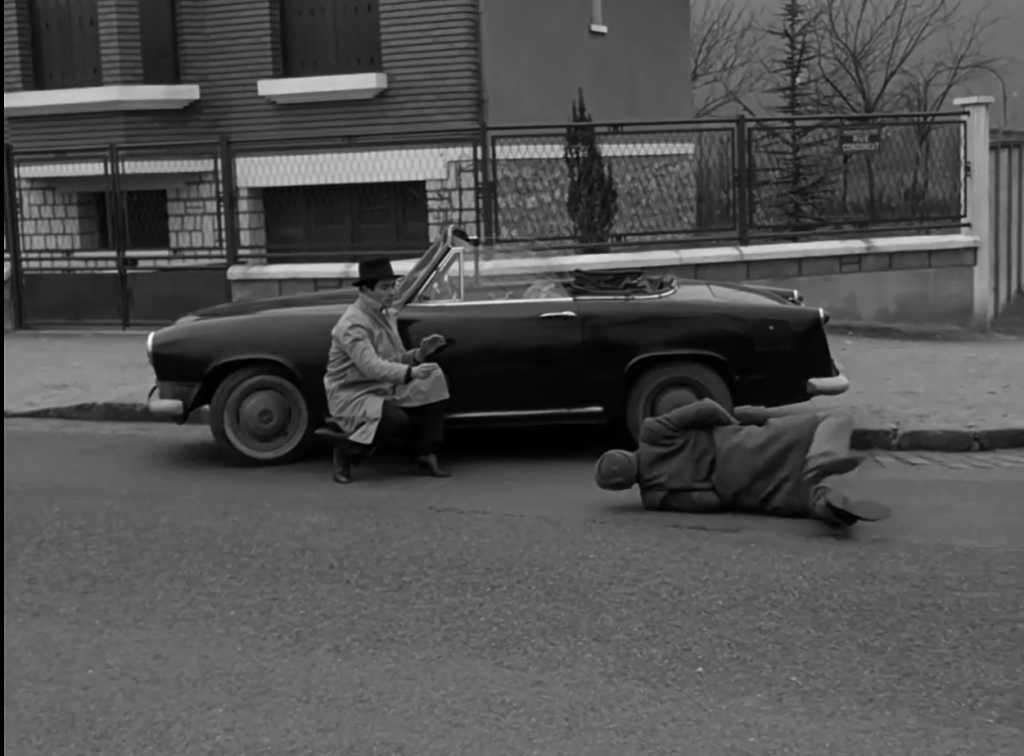
Because “their mutual girlfriend [?!], Anna Karina, wants to fit in,” she “offers a real crime to them: they can steal her aunt’s money” — but “the three bumbling… amateurs… can’t distinguish between fiction and real life.” Peary notes that “when they put on their movie criminal guises, they think of themselves romantically, as do Sissy Spacek and Martin Sheen in Badlands [1973] when they commit equally unromantic crimes; but, as is the case with Spacek and Sheen, their guns shoot real bullets and people get hurt.”

Peary points out that “the overlapping of reel life and ‘real life’… is disorienting because we have a hard time figuring out the logic of the characters’ actions” — however, while he argues this is “excitingly original,” I simply find it frustrating. We know far too little about these three uninteresting characters, other than that Karina’s Odile is for some reason hopelessly insecure (she wears primarily one expression — worried and uncertain — throughout the film):
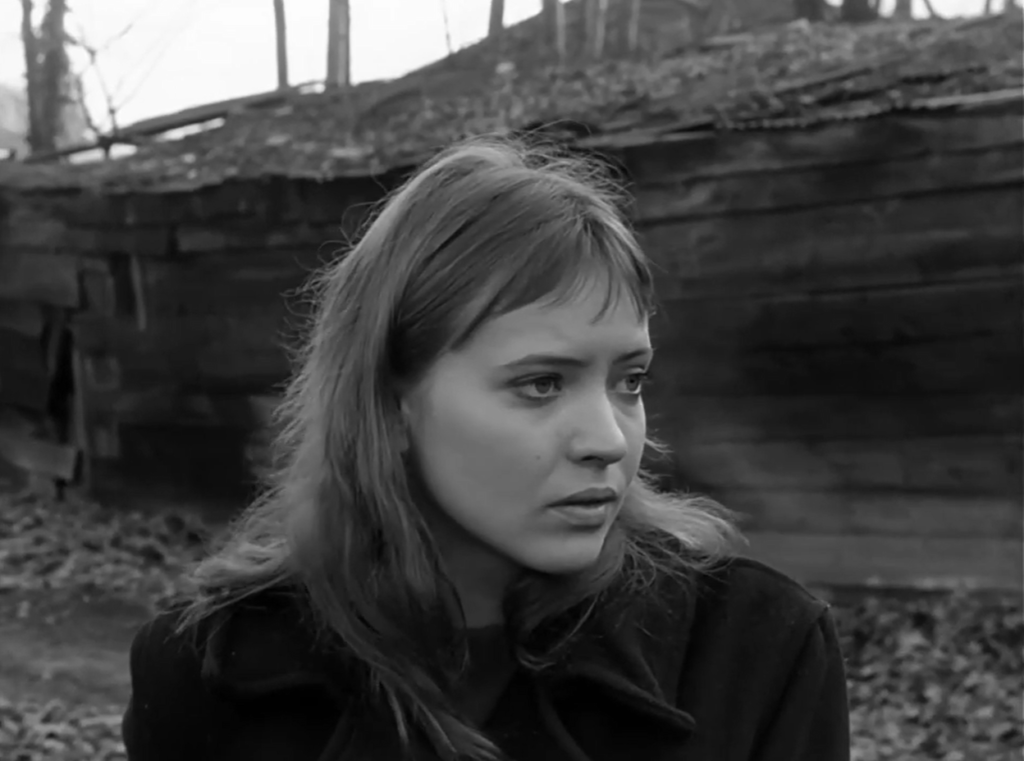
Sadly, this makes sense on a real-life level, given that according to TCM’s article, “At the time Karina was recovering from losing a child during her pregnancy followed by a suicide attempt… The relationship between Karina and Godard was also on shaky ground by this point in their marriage and they would soon go their separate ways after working together on Alphaville (1965).”
However, it’s frustrating as a viewer watching this beautiful young woman (who has a dark side of her own) caving in time and again to her (occasionally abusive) male partners; they bullishly get their way, but at obvious and inevitable costs. And what, exactly, does Karina see romantically in Brasseur? I understand the notion of a “bad boy” attraction:
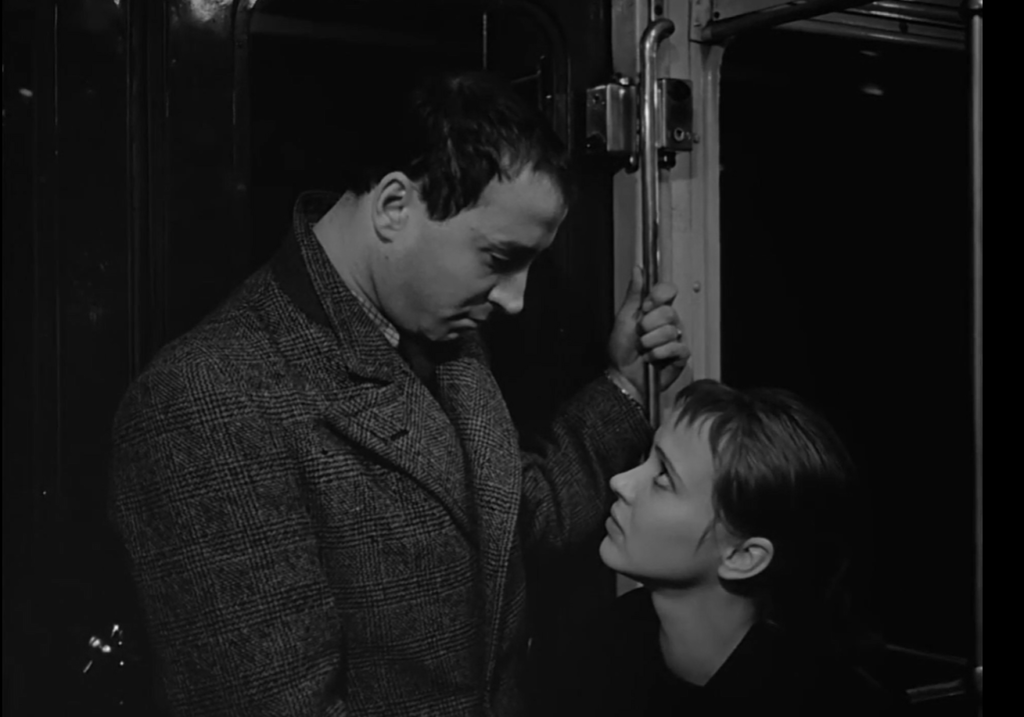
… but he’s neither charming nor handsome (rather, he’s oafish and crude). To that end, Jonathan Rosenbaum points out that “The melancholy trio of Jim Jarmusch’s Stranger Than Paradise (1984) … — two dandyish, deadbeat best friends and the shy, younger woman they’re smitten with — would have been inconceivable without Godard’s adorable threesome;” however, I’m not a fan of Jarmusch’s movie, and don’t consider the trio here (or there) to be anything close to “adorable”.
One of this film’s most memorable scenes occurs when Karina, Frey, and Brasseur get up and begin dancing “The Madison” in a line:
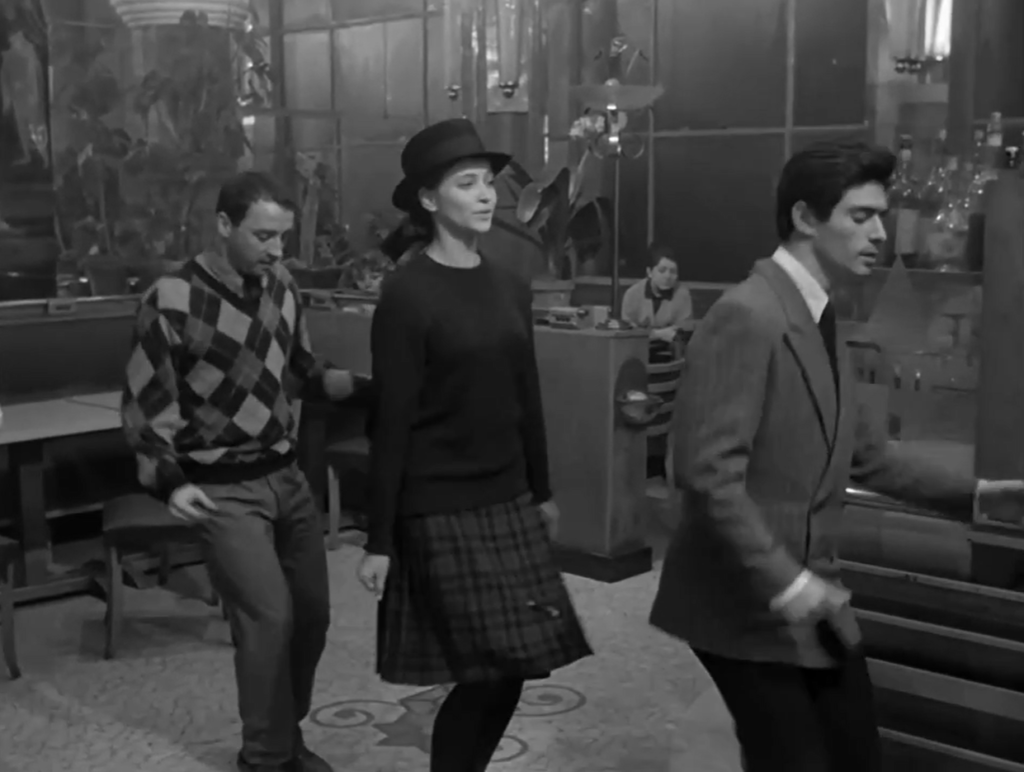
Indeed, Quentin Tarantino was smitten enough with this sequence to pay homage to it in Pulp Fiction (1994), when Uma Thurman and John Travolta boogie on the dance floor; but here it’s merely a diversion rather than — as Godard’s somber voiceover claims — an opportune moment to offer “a digression in which to describe our heroes’ feelings.” While most film fanatics will be curious to check out this historically influential film, I don’t consider it one of Godard’s must-see movies.
Notable Performances, Qualities, and Moments:
- Raoul Coutard’s cinematography
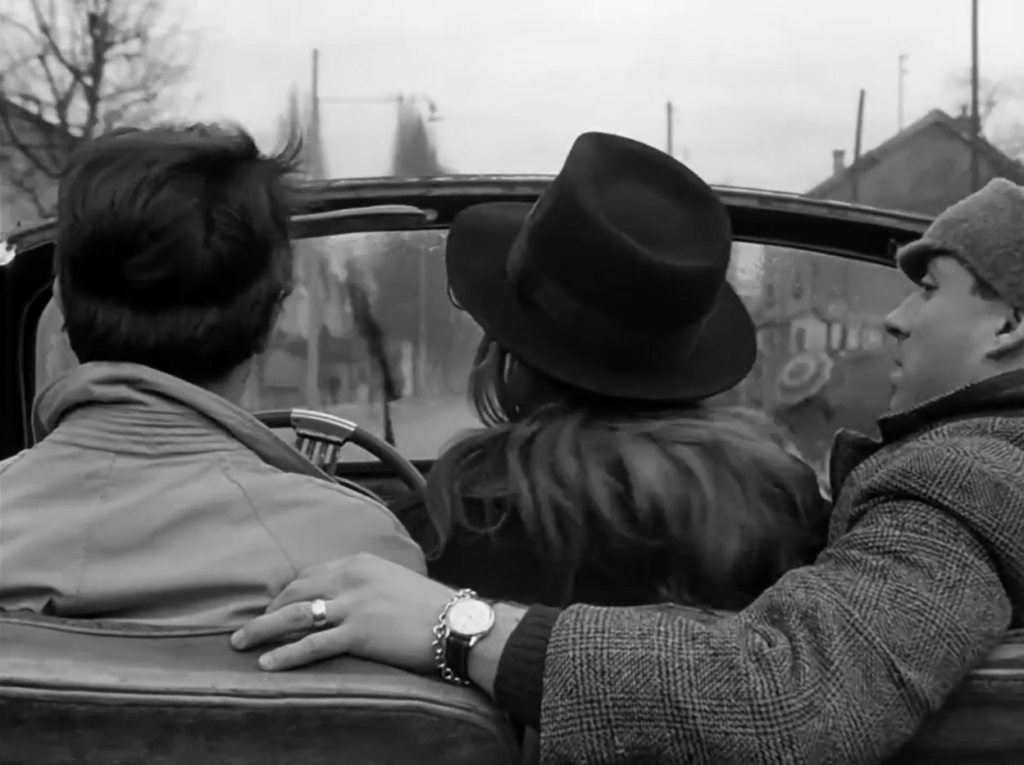
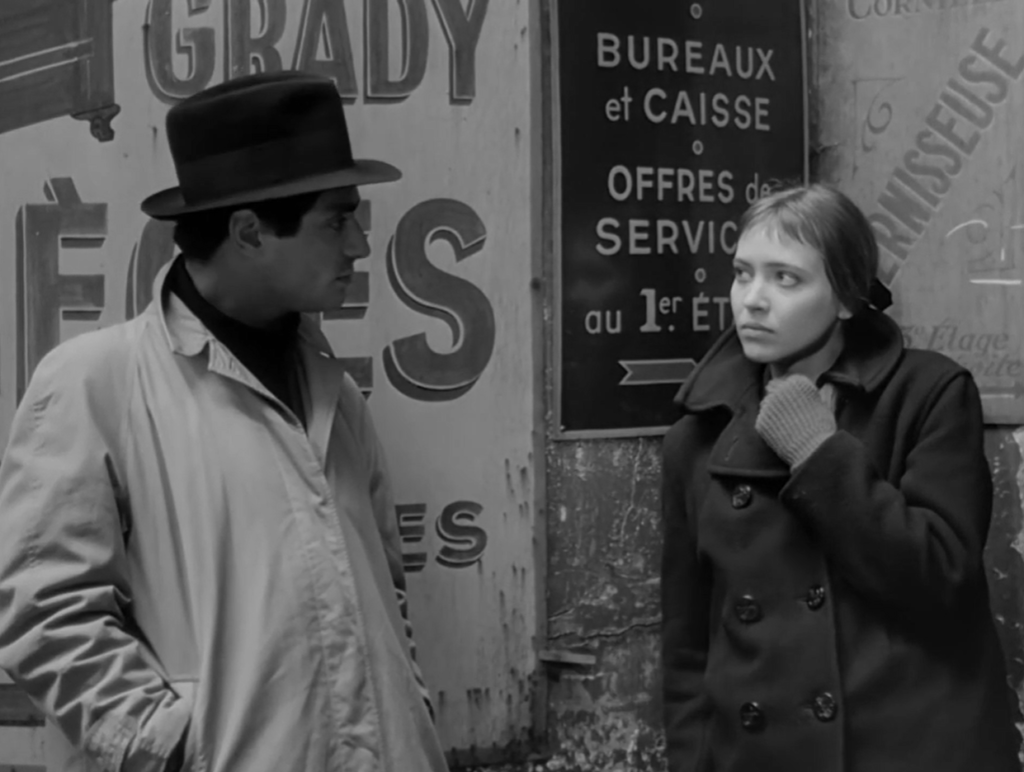
Must See?
No, though as stated above, most film fanatics will likely be curious to check it out.
Links:
|
